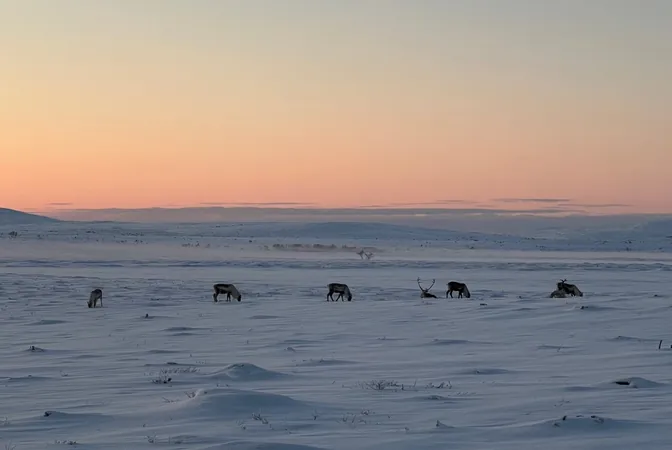
How Reindeer Grazing Fights Back Against Winter Climate Change and Protects Our Forests
2025-09-17
Author: Siti
The Impact of Climate Change on Our Forests
In the battle against climate change, northern coniferous forests are under siege. A recent study from the University of Oulu, Finland, reveals how the harsh realities of winter climate change are profoundly affecting these green giants. This research highlights a surprising hero: reindeer grazing.
Unlocking New Insights from Oulu and Kevo
Published in the journal *Science of The Total Environment*, the study analyzed two distinct areas in Finland: one where reindeer have grazed for decades and another where grazing was halted anywhere from 25 to 55 years. The researchers sought to uncover how these majestic animals influence carbon exchange in our forests—a crucial factor since northern forests store a staggering one-third of the world's carbon.
The Snow-Grazing Connection
Climate change isn't just a warm-weather issue; it wreaks havoc during the winter, too. Snow depths and durations have fluctuated, altering the carbon cycle not just in winter but impacting the following summer growing season. Interestingly, the grazing patterns of reindeer also play a pivotal role; their munching habits affect the prevalence of lichens, which are vital for understory vegetation.
Research Findings: A Tale of Two Climate Responses
During the 2019-2023 growing seasons, researchers meticulously documented how varying snow conditions interacted with reindeer grazing. In areas with no grazing for 55 years, shallow snow increased carbon release from both soil and understory—whereas deeper snow decreased this release. However, in areas still benefiting from reindeer grazing, carbon release remained stable regardless of snow depth fluctuations.
Resilience Amidst Change
Doctoral Researcher Noora Kantola remarked that these findings indicate northern coniferous forests may possess a remarkable resilience to short-term winter climate changes. Yet, the study emphasizes the importance of understanding why snow depth impacted carbon exchange only in long-term exclosure areas.
Reindeer: Guardians of Biodiversity
Postdoctoral Researcher Maria Väisänen highlights that reindeer grazing not only stabilizes carbon exchange under changing climate conditions but also plays a key role in sustaining biodiversity in northern ecosystems. Professor Jeffrey Welker underscores the crucial, yet often overlooked, impacts of grazing on understory carbon exchange.
Expanding the Research Frontier
Beyond just influencing vegetation, these graceful animals also affect tree carbon sequestration and the overall carbon balance of forests. Ongoing projects at the University of Oulu are diving deeper into how grazing interacts with climate change trends, tree growth, and physiology.
Implications for Land Use and Ecosystem Planning
The revelations from this study are far-reaching; they hold the potential to inform land-use planning in coniferous forests, particularly where land practices have changed lichen cover due to grazing or forestry. Understanding these dynamics is critical for preserving carbon cycles as our climate continues to evolve.
Conclusion: The Unsung Heroes of our Ecosystems
As highlighted by the EcoClimate system's ongoing investigations, reindeer grazing serves as a natural buffer against the detrimental effects of climate change. This research not only sheds light on the intricate interplay of snow, grazing, and carbon exchange but also reinforces the importance of these majestic creatures in maintaining the health of our northern forests.
 Brasil (PT)
Brasil (PT)
 Canada (EN)
Canada (EN)
 Chile (ES)
Chile (ES)
 Česko (CS)
Česko (CS)
 대한민국 (KO)
대한민국 (KO)
 España (ES)
España (ES)
 France (FR)
France (FR)
 Hong Kong (EN)
Hong Kong (EN)
 Italia (IT)
Italia (IT)
 日本 (JA)
日本 (JA)
 Magyarország (HU)
Magyarország (HU)
 Norge (NO)
Norge (NO)
 Polska (PL)
Polska (PL)
 Schweiz (DE)
Schweiz (DE)
 Singapore (EN)
Singapore (EN)
 Sverige (SV)
Sverige (SV)
 Suomi (FI)
Suomi (FI)
 Türkiye (TR)
Türkiye (TR)
 الإمارات العربية المتحدة (AR)
الإمارات العربية المتحدة (AR)